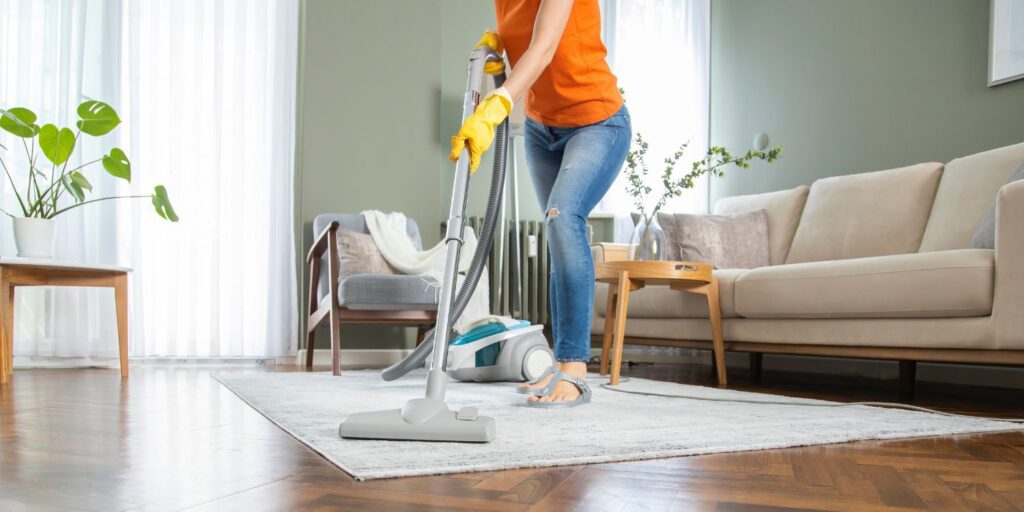Oklahoma, known for its diverse landscapes and rich culture, is also home to a variety of pests, including fleas. Fleas are tiny, resilient parasites that can cause significant problems for both humans and animals in the state. With a warm and humid climate, Oklahoma provides an ideal environment for flea populations to thrive. So, let’s take a look at the fleas in Oklahoma, their impact on residents, pets, and potential health risks, as well as discuss effective solutions to tackle these issues.

When it comes to unwelcome house guests, fleas rank high on the list of nuisances that can quickly turn a happy home into an itching nightmare. These tiny, agile parasites may be minuscule in size, but their ability to cause discomfort and spread rapidly makes them a formidable opponent. A flea infestation is not only distressing for pets but can also affect the well-being of the entire household.
In this comprehensive guide, we will explore the world of fleas, their life cycle, potential health risks, and most importantly, effective pest control solutions that can help you eliminate these pesky invaders and reclaim your home.
Understanding Fleas
Fleas are small, wingless insects that belong to the Siphonaptera order. Their flat, reddish-brown bodies are specially designed for easy navigation through fur or feathers. The most common flea species encountered in homes is the cat flea (Ctenocephalides felis) and the dog flea (Ctenocephalides canis). Contrary to their names, these fleas can infest both cats and dogs, along with other warm-blooded animals like rabbits and rodents.

Flea Life Cycle
To combat fleas effectively, understanding their life cycle is crucial. The flea life cycle comprises four stages:
- Egg: The adult female flea lays eggs on the host, which then fall off into the environment, such as carpets, pet bedding, or cracks in the floorboards.
- Larva: Flea eggs hatch into larvae, tiny, worm-like creatures that avoid light and burrow deep into carpets and other hiding spots to feed on organic debris.
- Pupa: Larvae spin cocoons and enter the pupal stage, where they undergo metamorphosis into adult fleas. The pupae are well-protected and challenging to eliminate.
- Adult: Once the adult flea emerges from the pupa, they seek a host for a blood meal. The cycle then repeats, with female fleas capable of laying hundreds of eggs during their lifetime.
Health Risks and Concerns
Fleas are more than just a nuisance; they can pose significant health risks to both humans and pets. Some of the potential health concerns include:
- Skin Irritation: Flea bites can cause red, itchy welts on the skin, leading to discomfort and irritation for both humans and animals.
- Allergic Reactions: Some individuals and pets may develop allergic reactions to flea saliva, leading to more severe itching and skin problems.
- Anemia: In severe infestations, especially with young or small animals, fleas can cause anemia due to blood loss, which may require medical attention.
- Disease Transmission: While not as common as with ticks, fleas can transmit diseases such as murine typhus and Bartonella (cat scratch disease).
- Emotional Distress: Living in a home infested with fleas can be emotionally distressing. The constant itching and fear of more bites can cause anxiety and disrupt daily life.
- Pet Health: Fleas primarily target pets, causing them to scratch incessantly. Frequent scratching can lead to skin infections and hair loss in pets, requiring medical attention and adding to the pet owners’ worries.

Tips for Flea Prevention
Preventing a flea infestation is always better than treating one. Here are some practical tips to reduce the risk of flea problems in your home:
- Regular Pet Care: Pet owners should maintain regular grooming and veterinary care for their pets. Regular bathing, flea combing, and the use of veterinarian-prescribed flea preventatives can significantly reduce the risk of infestations.
- Vacuuming: Vacuum your home frequently, paying particular attention to carpets, rugs, and pet bedding. This helps remove flea eggs, larvae, and pupae from the environment.
- Washing Bedding: Wash your pet’s bedding and any removable fabric items in hot water to kill fleas at all stages of their life cycle.
- Yard Maintenance: Keep your yard tidy and trim the grass regularly, as tall grass provides an ideal environment for fleas.
- Professional Pest Inspection: Schedule regular inspections with a pest control professional to detect potential flea infestations early.

Challenges in Flea Control
Several factors contribute to the challenges faced in controlling fleas in Oklahoma:
- Ideal Climate: The warm and humid climate in Oklahoma allows fleas to thrive year-round, making eradication efforts more difficult.
- Rapid Reproduction: Fleas reproduce rapidly, with a single adult female capable of laying hundreds of eggs during her lifetime. This quick reproduction rate makes it challenging to keep their numbers in check.
- Resistance to Insecticides: Some flea populations have developed resistance to certain insecticides, making traditional pest control methods less effective.

Fleas in Oklahoma are a persistent challenge due to the state’s warm climate and favorable conditions for their reproduction. The impact of flea infestations on residents and their pets can be considerable, causing discomfort, health risks, and emotional distress. However, by maintaining proper pet care, practicing good household hygiene, and seeking professional pest control assistance when needed, residents can effectively combat flea problems and create a healthier and more comfortable living environment for themselves and their furry companions in Oklahoma.
